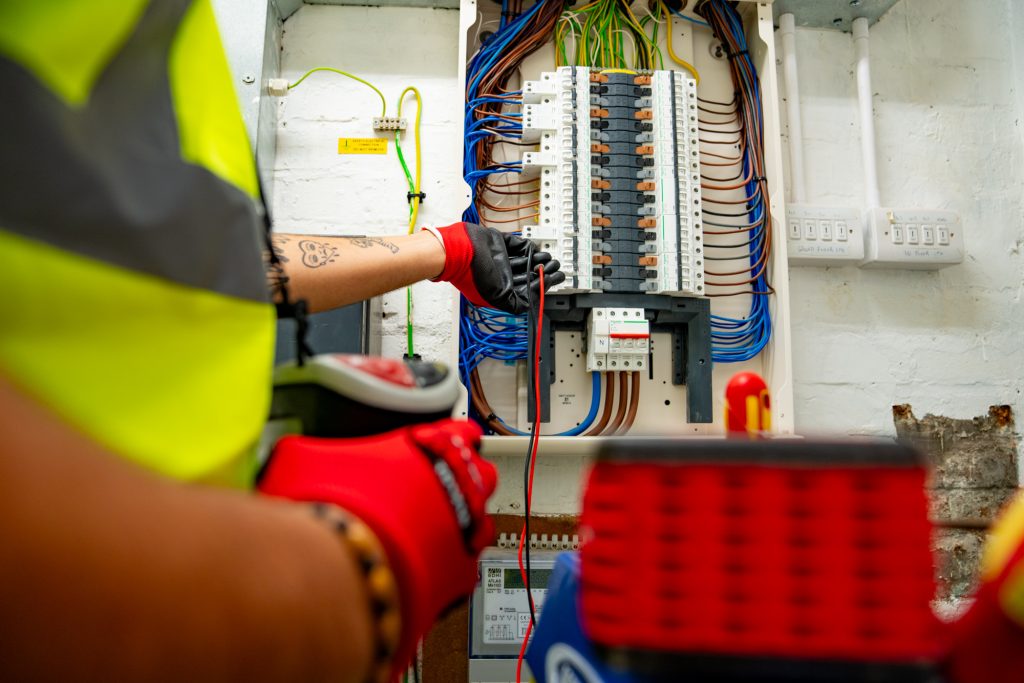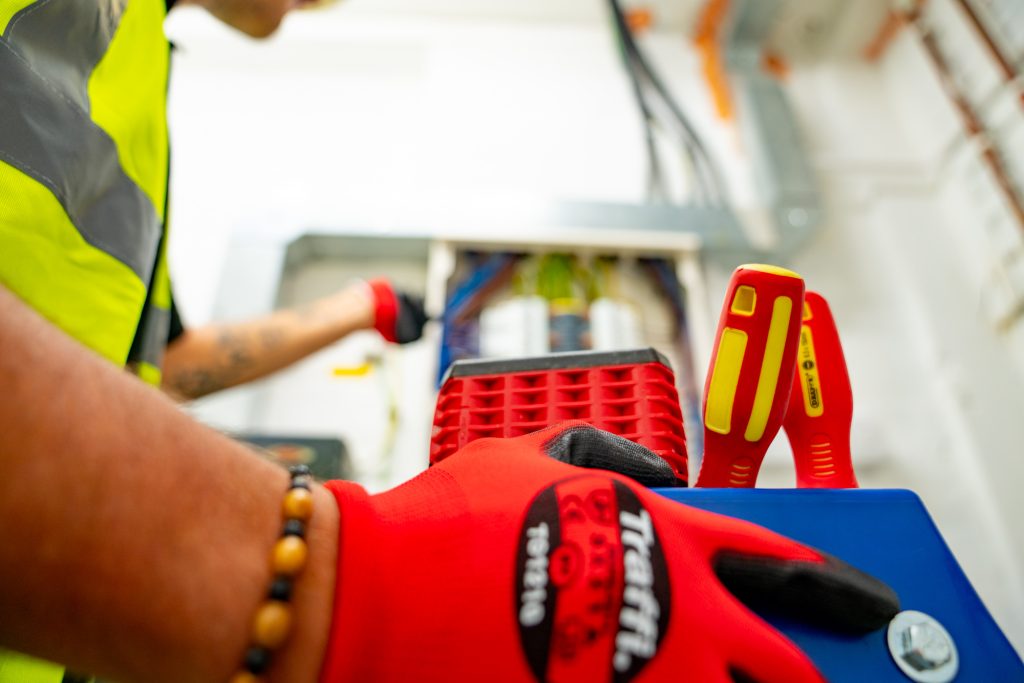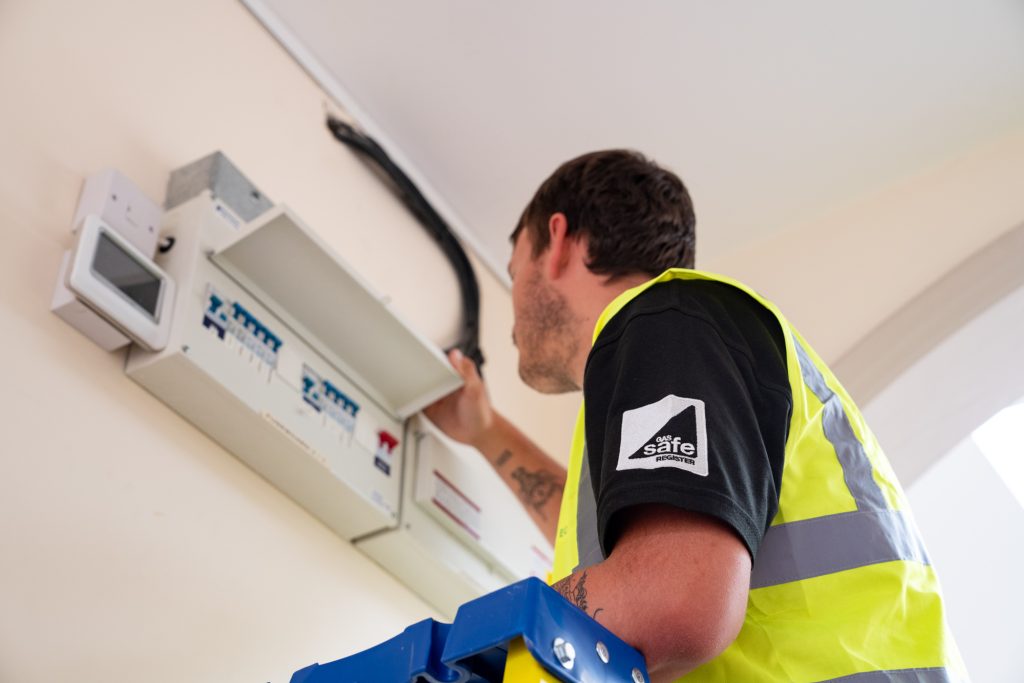Navigating electrical regulations in the UK is crucial for homeowners, landlords, estate agents, and property professionals. This guide aims to provide clear and informative insights into the world of electrical regulations in the UK.
We’ll offer expert advice and information aimed at property owners and professionals. From EICRs to gas safety checks, we hope to provide you with a valuable tool to ensure your properties remain compliant.
If you need your electrics checked with a PAT test or EICR, or simply need advice contact us today
Electrical regulations in the UK have evolved over time to ensure that electrical installations are safe and efficient. The first version of the IET Wiring Regulations, also known as BS 7671, was introduced in 1882. It aimed to standardise the increasing number of electrical installations in response to the rapid expansion of the use of electricity. Over the years, these regulations have been updated regularly to reflect advancements in technology and to improve safety standards.
In 2005, Part P of the Building Regulations was introduced, which further tightened the requirements for domestic electrical installations. It requires that most electrical work in dwellings in England and Wales be carried out by government-registered electricians, or to be inspected by Building Control. This was a big step in ensuring that electrical work is performed to a high standard, reducing the risk of electric shock and fire.
Understanding the history of electrical regulations in the UK is essential for appreciating their importance and the rigorous nature of current standards. It also serves as a reminder of the ongoing commitment to safety and excellence in the UK’s electrical industry.
Non-compliance with electrical regulations in the UK can have serious consequences. For individuals or businesses, failing to adhere to these standards can lead to hefty fines and, in extreme cases, imprisonment. Beyond legal consequences, there are practical safety concerns; non-compliant electrical installations pose a risk of fire, electric shock, or other harm to occupants.
For landlords, non-compliance can invalidate property insurance, lead to claims for civil damages, and damage reputation. In the event of an incident, if the electrical installations are found to be at fault due to non-compliance, the responsible parties could face serious legal action.
Moreover, estate agents and local authorities are also obligated to ensure that properties meet the required standards before occupancy. Ignoring these regulations can lead to loss of trust and credibility among clients and the general public.
The implications of non-compliance stress the importance of understanding and keeping to UK electrical regulations to protect oneself from legal action and to ensure the safety and well-being of all property users.
If you need your electrics checked with a PAT test or EICR, or simply need advice contact us today

A common misconception about electrical regulations in the UK is that they only apply to new buildings or major refurbishments. In reality, these regulations cover all electrical work, including minor installations and repairs in existing properties.
Some people also mistakenly believe that electrical regulations are guidelines rather than legally enforceable standards, which is not the case; they are mandatory and failure to comply can result in legal action.
Another misunderstanding is that all electrical work must be done by a qualified electrician. While it is true that certain tasks require a professional, there are some minor jobs that homeowners can legally undertake themselves. However, for safety and compliance, it is always recommended to consult an expert.
Lastly, there is a misconception that once installed, electrical systems do not require further inspection. Regular checks, such as the Electrical Installation Condition Report (EICR), are crucial to ensure ongoing compliance and safety. Clearing up these misconceptions helps maintain high standards and safety in electrical installations across the UK.
If you need your electrics checked with a PAT test or EICR, or simply need advice contact us today
Part P of the Building Regulations is a critical part of electrical regulations in the UK. It was introduced to increase the safety of households by improving the standards of electrical work. It stipulates that anyone carrying out electrical installation work in a home must make sure that the work is designed and installed to protect people from fire and electric shocks. This applies to new buildings and to any changes or additions to existing installations, including full rewires.
What sets Part P apart is that not only does it apply to the fixed electrical parts of the building, but it also includes gardens and outbuildings. For certain types of work, such as the installation of new circuits or the replacement of consumer units, notifications must be made to the local authority’s Building Control department or the work must be carried out by an electrician registered with a competent person scheme.
Failure to comply with Part P can lead to hefty fines and may mean remedial work to ensure it meets the required standards. This regulation underscores the responsibility of homeowners and professionals alike to ensure safety in electrical installations.
If you need your electrics checked with a PAT test or EICR, or simply need advice contact us today
The Electricity at Work Regulations impose a duty on employers and self-employed individuals to take reasonable steps to ensure that all aspects of their electrical systems are safe and pose no danger to workers or the public. These regulations require that systems must be constructed and maintained to prevent danger, and this extends to all electrical equipment used in work environments.
One of the key requirements is the need for regular inspections and testing to ensure that electrical systems and equipment are in good working order and safe to use. This includes everything from the main power supply to the smallest piece of electrical apparatus. It’s also vital that persons involved in any electrical work have adequate training and knowledge to carry out tasks safely.
Documentation of maintenance routines and safety checks is another crucial aspect of compliance, often overlooked. This not only provides a record of due diligence but is also essential in the event of an investigation following an incident. The commitment to safe electrical practices as outlined by these regulations is a cornerstone of workplace safety in the UK.

The IET Wiring Regulations, known as BS 7671, are the national standard in the UK for the safety of electrical installations. They are a detailed set of guidelines that electricians and other professionals must follow when installing or modifying electrical systems. These regulations are updated regularly to account for new technologies and methods, ensuring that electrical work is safe and effective.
BS 7671 covers a wide range of topics, from circuit design and protection to the selection and erection of equipment. It lays out the requirements for conducting electrical installations in a way that prevents hazards such as electrical shocks and fires. It also specifies how to provide proper earthing and bonding, crucial for the safety of an installation.
Compliance with BS 7671 is not optional; it is a legal requirement. Following these regulations is essential for not only passing inspections but also for the long-term safety of building occupants. Electricians must ensure they are up-to-date with the current standards to maintain compliance.
If you need your electrics checked with a PAT test or EICR, or simply need advice contact us today
For homeowners in the UK, understanding and applying electrical regulations is essential for both safety and legal compliance. Primarily, any new electrical installation work must comply with Part P of the Building Regulations, which may require notifying the local authority or using a registered electrician who can self-certify their work.
Homeowners should ensure regular electrical inspections are carried out; an Electrical Installation Condition Report (EICR) is recommended every ten years or on change of occupancy. This report identifies any deficiencies against the safety standard for electrical installations.
It’s also important to note that DIY electrical work is not prohibited, but it comes with the responsibility to ensure that the work meets the regulations. For more complex projects, however, hiring a professional is advisable to avoid the risks associated with improper installation.
Lastly, homeowners should be aware that electrical work may affect their home insurance policy. Therefore, it’s prudent to check with your insurance provider to understand how compliance with electrical regulations impacts your coverage.
If you need your electrics checked with a PAT test or EICR, or simply need advice contact us today
Landlords have a legal obligation to ensure that the electrical installations in their rental properties are safe when tenants move in and are maintained in a safe condition throughout the duration of the tenancy. In the UK, this means complying with the Electrical Regulations, which include regular inspections and the obtaining of an Electrical Installation Condition Report (EICR) at least every five years, or more frequently for certain types of rental property.
Failure to comply with these regulations can lead to significant penalties, including fines and potential restrictions on renting out the property. Moreover, if an accident were to occur as a result of faulty electrics, a landlord could face legal action.
Landlords should also be aware of the Smoke and Carbon Monoxide Alarm (England) Regulations 2015, which require smoke alarms to be installed on every floor of a rental property and carbon monoxide alarms in rooms with a solid fuel appliance.
Staying informed about and adhering to electrical regulations is not only a legal duty for landlords but also a crucial part of ensuring tenant safety and protecting their investment.
If you need your electrics checked with a PAT test or EICR, or simply need advice contact us today
Estate agents and local authorities play a pivotal role in ensuring that electrical regulations in the UK are met within the property market. They must ensure that the properties they manage or facilitate transactions for are fully compliant with current electrical safety standards. This includes having up-to-date Electrical Installation Condition Reports (EICRs) before listing properties for sale or rent.
For local authorities, there’s also a responsibility to enforce these regulations, particularly in social housing and council-owned properties. They must ensure regular inspections and maintenance are carried out and that any necessary remedial work is completed promptly to keep tenants safe.
Estate agents, on the other hand, should verify that all listings comply with electrical regulations to protect potential buyers or renters and to avoid legal repercussions for their agency. They are often the first point of contact for homeowners and landlords, placing them in a prime position to provide guidance on compliance with electrical regulations.
Clear communication about the importance of these regulations and the consequences of non-compliance is essential for estate agents and local authorities. It not only demonstrates their commitment to safety and professionalism but also helps maintain high standards across the property sector.
If you need your electrics checked with a PAT test or EICR, or simply need advice contact us today

Electrical Installation Condition Reports (EICRs) are vital documents that assess the safety of electrical installations within a property. They are a formal part of ensuring compliance with Electrical Regulations in the UK. An EICR identifies any damage, deterioration, defects, or conditions within an electrical system that might give rise to danger.
For landlords, an EICR is legally required every five years or with each change of tenancy. It’s also considered good practice for homeowners to have an EICR conducted at similar intervals, although it is not a legal obligation for owner-occupied homes.
Having an EICR is not just a compliance measure; it is a crucial part of a proactive approach to safety. It helps to prevent potential accidents by identifying and rectifying issues before they become serious problems. Furthermore, an EICR can provide peace of mind to property owners and tenants alike, knowing that the electrical installations meet the required safety standards.
Failure to have a current EICR can lead to fines and, more importantly, can put occupants at risk. Therefore, it is an essential part of property maintenance and safety.
If you need your electrics checked with a PAT test or EICR, or simply need advice contact us today
Energy Performance Certificates (EPCs) are another essential element of property compliance in the UK, although not directly related to electrical safety. An EPC provides information about a property’s energy use and typical energy costs, as well as recommendations about how to reduce energy use and save money. It gives the property an energy efficiency rating from A (most efficient) to G (least efficient).
For landlords and sellers, it’s a legal requirement to have a valid EPC when a property is sold, let or constructed, and it must be made available to prospective buyers or tenants. EPCs are valid for ten years from the date of issue.
While EPCs focus on energy performance and not on electrical safety per se, they often include recommendations that can affect electrical installations, such as the installation of more efficient lighting systems. Implementing these recommendations not only improves energy efficiency but can also enhance the safety and compliance of the electrical system overall.
Therefore, obtaining an EPC can be seen as an integral part of maintaining a property’s compliance with both energy and electrical regulations in the UK.
If you need your electrics checked with a PAT test or EICR, or simply need advice contact us today